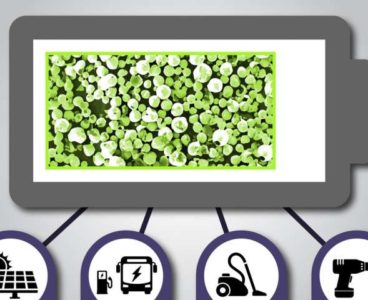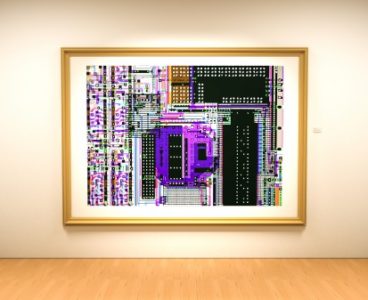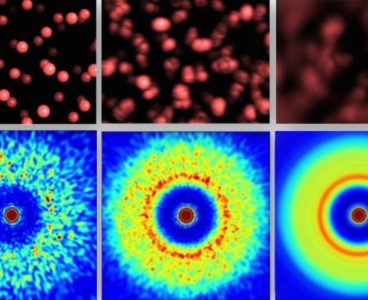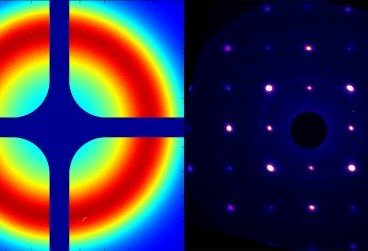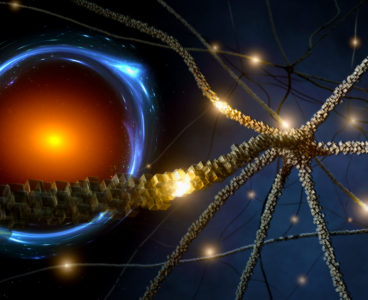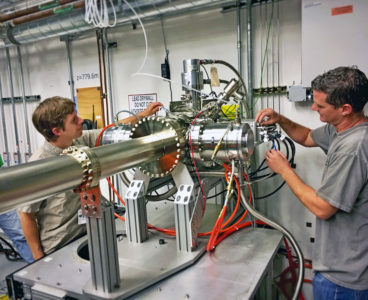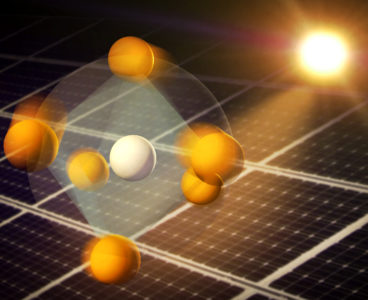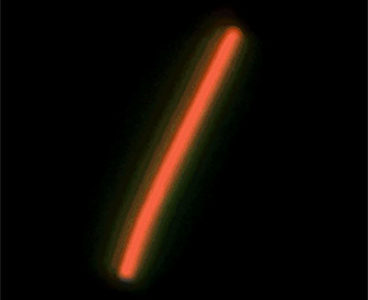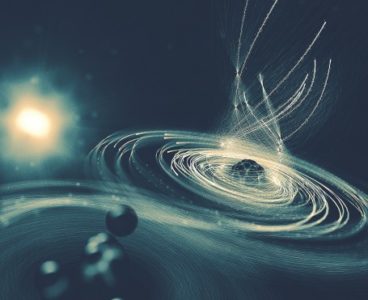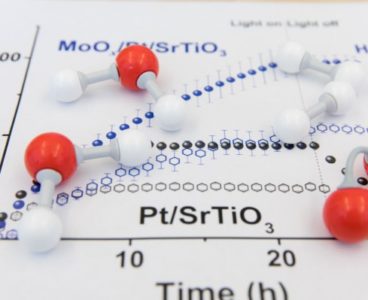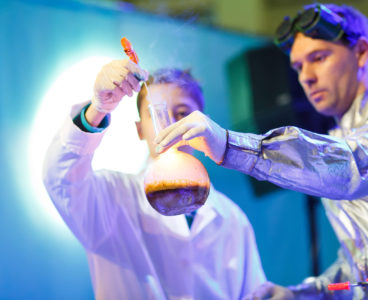The lithium ion batteries that power electric vehicles and phones charge and discharge by ferrying lithium ions back and forth between two electrodes, an anode and a cathode. The more lithium ions the electrodes are able to absorb and release, the more energy the battery can store. One issue plaguing today’s commercial battery materials is…
Researchers Create Most Complete High-Resolution Atomic Movie of Photosynthesis to Date
Despite its role in shaping life as we know it, many aspects of photosynthesis remain a mystery. An international collaboration between scientists at SLAC National Accelerator Laboratory, Lawrence Berkeley National Laboratory and several other institutions is working to change that. The researchers used SLAC’s Linac Coherent Light Source (LCLS) X-ray laser to capture the most…
X-Rays Uncover a Hidden Property That Leads to Failure in a Lithium-Ion Battery Material
Over the past three decades, lithium-ion batteries, rechargeable batteries that move lithium ions back and forth to charge and discharge, have enabled smaller devices that juice up faster and last longer. Now, X-ray experiments at the Department of Energy’s SLAC National Accelerator Laboratory and Lawrence Berkeley National Laboratory have revealed that the pathways lithium ions…
How SLAC’s ‘Electronics Artists’ Enable Cutting-Edge Science
When Angelo Dragone talks about designing microchips for cutting-edge scientific applications at the Department of Energy’s SLAC National Accelerator Laboratory, it becomes immediately clear that it’s at least as much of an art form as it is research and engineering. Similar to the way painters follow an inspiration, carefully choose colors and place brush stroke…
Particle Physicists Team Up With AI to Solve Toughest Science Problems
Experiments at the Large Hadron Collider (LHC), the world’s largest particle accelerator at the European particle physics lab CERN, produce about a million gigabytes of data every second. Even after reduction and compression, the data amassed in just one hour is similar to the data volume Facebook collects in an entire year – too much…
X-Ray Laser Reveals Ultrafast Dance of Liquid Water
Water’s lack of color, taste and smell make it seem simple – and on a molecular level, it is. However, when many water molecules come together they form a highly complex network of hydrogen bonds. This network is believed to be responsible for many of the peculiar properties of liquid water, but its behavior is…
Superconducting X-Ray Laser Takes Shape in Silicon Valley
An area known for high-tech gadgets and innovation will soon be home to an advanced superconducting X-ray laser that stretches 3 miles in length from the beginning of the accelerator to the end of the experimental halls, built by a collaboration of national laboratories. On January 19, the first section of the machine’s new accelerator…
Scientists Catch Light Squeezing and Stretching Next-Gen Data Storage Material
Scientists at the Department of Energy’s SLAC National Accelerator Laboratory have seen for the first time how atoms in iron-platinum nanoparticles – a next-generation material for magnetic data storage devices – respond extremely rapidly to brief laser flashes. Understanding these fundamental motions could potentially lead to new ways of manipulating and controlling such devices with…
Researchers Develop a Way to Better Predict Corrosion from Crude Oil
Artificial Intelligence Analyzes Gravitational Lenses 10 Million Times Faster
Researchers from the Department of Energy’s SLAC National Accelerator Laboratory and Stanford University have for the first time shown that neural networks – a form of artificial intelligence – can accurately analyze the complex distortions in spacetime known as gravitational lenses 10 million times faster than traditional methods. “Analyses that typically take weeks to months…
New X-Ray Laser Technique Reveals Magnetic Skyrmion Fluctuations
A new way of operating the powerful X-ray laser at the Department of Energy’s SLAC National Accelerator Laboratory has enabled researchers to detect and measure fluctuations in magnetic structures being considered for new data storage and computing technologies. In a paper published earlier this month in Physical Review Letters, a team led by Joshua Turner, SLAC…
Scientists Watch ‘Artificial Atoms’ Assemble into Perfect Lattices with Many Uses
Some of the world’s tiniest crystals are known as “artificial atoms” because they can organize themselves into structures that look like molecules, including “superlattices” that are potential building blocks for novel materials. Now scientists from the Department of Energy’s SLAC National Accelerator Laboratory and Stanford University have made the first observation of these nanocrystals rapidly…
Scientists Watch ‘Artificial Atoms’ Assemble into Perfect Lattices with Many Uses
Some of the world’s tiniest crystals are known as “artificial atoms” because they can organize themselves into structures that look like molecules, including “superlattices” that are potential building blocks for novel materials. Now scientists from the Department of Energy’s SLAC National Accelerator Laboratory and Stanford University have made the first observation of these nanocrystals rapidly…
Atomic Movies May Help Explain Why Perovskite Solar Cells Are More Efficient
In recent years, perovskites have taken the solar cell industry by storm. They are cheap, easy to produce and very flexible in their applications. Their efficiency at converting light into electricity has grown faster than that of any other material – from under four percent in 2009 to over 20 percent in 2017 – and…
Ultrafast ‘Electron Camera’ Captures Surprising Atomic Motions in these Next-Generation Materials
In recent years, perovskites have taken the solar cell industry by storm. They are cheap, easy to produce and very flexible in their applications. Their efficiency at converting light into electricity has grown faster than that of any other material – from under four percent in 2009 to over 20 percent in 2017 – and…
Scientists Get First Direct Look at How Electrons ‘Dance’ with Vibrating Atoms
Scientists at the Department of Energy’s SLAC National Accelerator Laboratory and Stanford University have made the first direct measurements, and by far the most precise ones, of how electrons move in sync with atomic vibrations rippling through an exotic material, as if they were dancing to the same beat. The vibrations are called phonons, and…
How A Single Chemical Bond Balances Cells Between Life And Death
Experiment is First to Decipher Atomic Structure of an Intact Virus With an X-Ray Laser
‘Molecular Black Hole’ Created By World’s Most Powerful X-Ray Laser Beam
When scientists at the Department of Energy’s SLAC National Accelerator Laboratory focused the full intensity of the world’s most powerful X-ray laser on a small molecule, they got a surprise: A single laser pulse stripped all but a few electrons out of the molecule’s biggest atom from the inside out, leaving a void that started…
Researchers Develop A New Catalyst For Water Splitting
Hydrogen is one of the most promising clean fuels for use in cars, houses and portable generators. When produced from water using renewable energy resources, it is also a sustainable fuel with no carbon footprint. However, water-splitting systems require a very efficient catalyst to speed up the chemical reaction that splits water into hydrogen and…
Machine Learning Dramatically Streamlines Search For More Efficient Chemical Reactions
Study Uses an Electric Field to Create Magnetic Properties in Nonmagnetic Material
In a proof-of-concept study published in Nature Physics, researchers drew magnetic squares in a nonmagnetic material with an electrified pen and then “read” this magnetic doodle with X-rays. The experiment demonstrated that magnetic properties can be created and annihilated in a nonmagnetic material with precise application of an electric field – something long sought by scientists…
Researchers Use World’s Smallest Diamonds to Make Wires Three Atoms Wide
Scientists at Stanford University and the Department of Energy’s SLAC National Accelerator Laboratory have discovered a way to use diamondoids – the smallest possible bits of diamond – to assemble atoms into the thinnest possible electrical wires, just three atoms wide. By grabbing various types of atoms and putting them together LEGO-style, the new technique…
Molecules Imitate Schroedinger’s Cat Theory
One of the most famous mind-twisters of the quantum world is the thought experiment known as “Schroedinger’s Cat,” in which a cat placed in a box and potentially exposed to poison is simultaneously dead and alive until someone opens the box and peeks inside. Scientists have known for a long time that an atom or…
High-speed Electron Camera Captures Atomic Nuclei
An ultrafast “electron camera” at the Department of Energy’s SLAC National Accelerator Laboratory has made the first direct snapshots of atomic nuclei in molecules that are vibrating within millionths of a billionth of a second after being hit by a laser pulse. The method, called ultrafast electron diffraction (UED), could help scientists better understand the…



